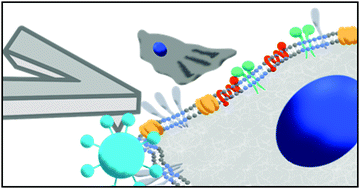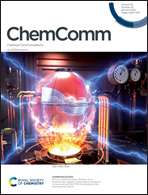Atomic force microscopy applied to interrogate nanoscale cellular chemistry and supramolecular bond dynamics for biomedical applications
Abstract
Understanding biological interactions at a molecular level grants valuable information relevant to improving medical treatments and outcomes. Among the suite of technologies available, Atomic Force Microscopy (AFM) is unique in its ability to quantitatively probe forces and receptor–ligand interactions in real-time. The ability to assess the formation of supramolecular bonds and intermediates in real-time on surfaces and living cells generates important information relevant to understanding biological phenomena. Combining AFM with fluorescence-based techniques allows for an unprecedented level of insight not only concerning the formation and rupture of bonds, but understanding medically relevant interactions at a molecular level. As the ability of AFM to probe cells and more complex models improves, being able to assess binding kinetics, chemical topographies, and garner spectroscopic information will likely become key to developing further improvements in fields such as cancer, nanomaterials, and virology. The rapid response to the COVID-19 crisis, producing information regarding not just receptor affinities, but also strain-dependent efficacy of neutralizing nanobodies, demonstrates just how viable and integral to the pre-clinical development of information AFM techniques are in this era of medicine.

- This article is part of the themed collection: Chemical Communications HOT Articles 2022


 Please wait while we load your content...
Please wait while we load your content...